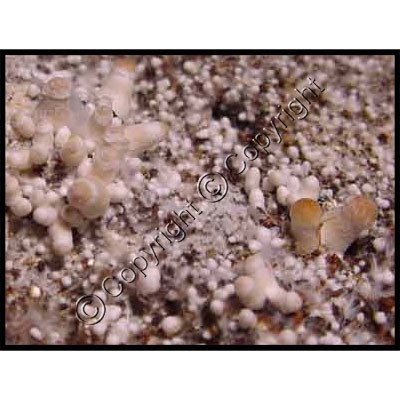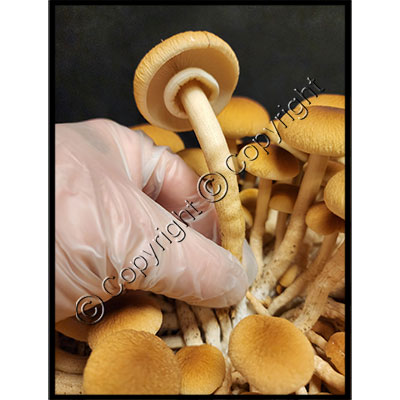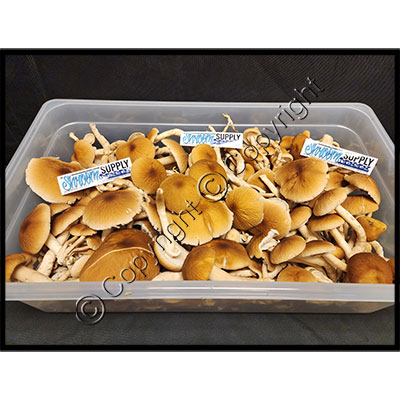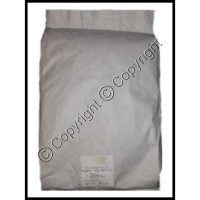
1) Spawn Production 2) Bulk Substrate Colonization 3) Mushroom Fruiting

1) Spawn Production
You should be doing the injection in a glovebox, or at the very least, a still-air environment. If you are going to work in open air, we suggest turning your AC/heater off an hour prior to inoculating your bags (this reduces the amount of airborne contaminants in the area). It is also recommended to work in a clean, small room with the door closed to prevent airflow.

Step 1: The first step of inoculating a grain bag is to prepare it for injection with spores or mycelial culture. Carefully pull the gussets on the bag apart all the way up to the top of the bag, where it is sealed. You want to make sure to "inflate" the bag enough so the filter has some room to "breathe." If the filter is pressed up against the plastic of the bag, it will limit gas exchange during the colonization phase and could potentially stall the colonization process.




Step 5: Place your bag in a place that is subject to minimum disturbances and will maintain a temperature between 75 and 81°F. It doesn't matter if it is dark or light. You should see signs of growth 3-10 days after inoculation. Try your best to disturb the bag as little as possible during this time period. You want the bag in an upright position (not rolled up) with ample space between the filter and the plastic of the bag so it can breathe during this critical colonization time period. See picture above.




2) Bulk Substrate Colonization



Step 11: For every 5 lb. bag of compost that your grow kit contains (this depends on what size kit you ordered), you are provided with two brand new filter-patch grow bags. Pour half of the 5 lb. bag (2.5 lbs. worth of substrate) into one of the brand new filter-patch bags and pour the other half of the substrate into another brand new bag. It is best to do this step in a small, clean workspace with limited airflow. Make sure to wear gloves during this step.

Step 12: Cut off the bag of broken-up colonized grain (the bag that you previously broke up) directly below the filter-patch with a clean pair of scissors.

Step 13: Dump the broken-up grain bag into one of the new 2.5 lb. bags of substrate that you just poured.



Step 16: Put the bag in a dark place that will maintain a temperature between 75-81°F. Disturb the bag as little as possible during this time period and do not open it until colonization is complete. It will take approximately 5-10 days for the substrate to completely colonize with mycelium (you will be able to tell if it has completed colonization when the substrate has turned completely white). The bag should look like the picture above.

3) Mushroom Fruiting


Step 18: Once the substrate has been introduced to fruiting conditions, you need to mist the substrate once per day throughout the entire fruiting stage. Remove the clamp from the bag and lightly mist the substrate with a clean misting spray bottle. Holding the nozzle of the bottle beneath the filter when spraying will prevent the filter from getting wet. Five or six sprays is sufficient, you don't want to soak the colonized substrate or leave pools of standing water on top of it. If excess water develops in the bag, carefully pour it out after you mist the substrate, being careful not to get the filter wet.

Step 19: Immediately after misting, you need to fan the bag of colonized substrate. To fan the bag, simply move the gussets of the bag in and out in a steady motion, creating a fan-like effect. This will promote fresh air exchange and vent out any CO2 that has been produced. This should be done on each bag for approximately 90 seconds. After fanning, reseal the bag of colonized substrate with the mushroom bag clamp. Remember to mist and fan once per day until the substrate is no longer producing mushrooms. If substrate appears to be fairly moist, you can skip misting on some days.



Step 23: When you pick the mushrooms, grab them from the base and "root" them up with a clean, gloved hand. If pieces of mushroom fruitbodies are left on the substrate after harvesting, they can rot and become a vector for contamination.





